& Why They Matter
As you may know, new mover marketing is a big segment for Strata and an offering we’re quite proud of. We believe we do it best – not only because of our experience and skill, but because of the multiple channels we use, the data we provide and incorporate, and the digital touches we implement. We’ve had trust in, and have been executing, great new mover campaigns for several years now. It’s no wonder we have an eye on new mover trends that may arise and behaviors within this segment – but we’re not sure anyone predicted or was prepared for the shift in the new mover market that happened at and after the onset of the pandemic. Today, we’re looking at how the new mover market has changed since March of 2020, and the increased need for new mover marketing solutions that it’s caused.
Stats You Need to Know
To get started, we wanted to give you a few recent new mover statistics to take in and think on:
- A fifth of US adults moved or knew someone that did due to the pandemic.
- Over 110,000 people moved away from New York City between February and July of 2020.
- 487% more people moved out of NY in 2020 than in 2019.
- Although there was no “exodus” away from urban areas that some were claiming, people did and do seem to generally be “drifting towards the suburbs”.
- Families have mostly chosen to move to the suburbs, while those living alone have more often chosen to move to metropolitan areas (In the first half of 2021, 7 in every 10 people who moved into urban areas were those living on their own).
- 35% of moves related to Covid-19 happened because of financial hardships.
- 36% of movers in a recent study claimed their reasoning for moving to a new place was because they felt safer there.
- 10% of them indicated that they moved to places with less stringent Covid-19 restrictions.
Overall, the pandemic has shown to accelerate some moving trends that have already been underway – and also create a few new ones. This, of course, has also had an impact on the effectiveness of new mover marketing (marketing specifically targeting new residents in your area).
What’s Causing all the Movement?
There are several reasons people are moving, some of them which we stated in the statistics above – and others that we’ll get into now. First and foremost, a big reason many have moved and are moving is financial stress. Many are moving to less expensive housing and apartment living to cut costs during these financially tough times. Additionally, apartment amenities or “big city” expenses that were previously valuable became almost meaningless during the peak of Covid-19, causing apartment-dwellers to rethink their living expenses.
Due to increases in work-from-home life and more flexible working hours and situations, people are craving more space. Because of this change, many are moving to larger spaces where they can work more comfortably. Additionally, they’re moving to where they truly want to be instead of where they previously “had” to be for their in-office employment.
For some people in different areas around the country and different industries within the workforce, finding employment during the pandemic has been tough, so this has caused some to find employment elsewhere and relocate.
And lastly, throughout the pandemic, the realization or reminder of the importance and need for family support during times of crisis and distress has been prominent – so many have moved and are still moving to be closer to the ones they love.
Overall – no matter where, when, or why they’re moving, people are definitely on the move since the onset of Covid-19.
How These Numbers (And the Causes Behind Them) Make Marketing to New Movers Essential
As you can probably imagine, as people move out of your area, you lose those customers, but as people move in, the opportunity arises for new customers to replace the old. So, more movers mean more new opportunity – but not if a competitor snatches them up by getting to them first and making a good impression.
That’s why it’s so important to be the first to put your brand in front of this niche audience, and to deliver quality marketing that welcomes, attracts, and entices them. New mover marketing programs are made to keep you connected with these new residents on a consistent basis, so that you’re never missing out on a new customer that, if targeted correctly, could become a loyal, repeat one.
Strata’s program, SmartMove, is a robust, multichannel, multi-touch, new mover marketing program that helps you find the right time and place to reach your target audience, right as they move into your surrounding area. We’ll help you reach this audience throughout their customer journey to build brand loyalty and trust and turn them into long-term, devoted customers. Interested in hearing more of our thoughts on the new mover market, or ready to start your first (or next) new mover campaign? Give us a call.
A Look at Some of Our Favorite Customer-Focused Campaigns
Although we could write several blogs about all the great marketing campaigns that inspire and motivate us to be the best marketers possible and make the most effective material – in this blog, we’re looking at a few that we really admire because of how relatable and real they are. We’ll be breaking them down, thinking through what made them so successful, and in turn – helping you brainstorm your next campaign. Follow along as we dive into these customer-centric campaign leaders.
Apple’s #ShotoniPhone Campaign

No matter where you’re located – you’ve likely seen this one around town. On billboards, buses, signs, or online. iPhone and Apple’s popularity is pretty known, but what we didn’t know when the iPhone first became popular was that it would eventually completely replace the digital camera. And that’s what this campaign shows; that you can take photos with your iPhone that are as beautiful as a camera that would cost you thousands. That’s great and all, but that alone would not convince people of today. So, why’s this campaign so successful? It gets real people involved. It’s relatable. The photos are not only from real Apple customers – but include their names. If someone wanted to, they could look up the name of the person in the bottom corner associated with taking the photo and learn more about who that person is. The best part? Not all of these people are photographers, showing that anyone could use the iPhone to take great photos. This tactic is pretty genius and builds trust – as no one would really care if it was simply a generic photo that easily could have been taken on a Canon. “According to various studies, over half (51%) of Americans trust user-generated content more than other information on a company website and claim that it influences what they buy and where they buy it from.”
Coors Light’s #CouldUseABeer Campaign
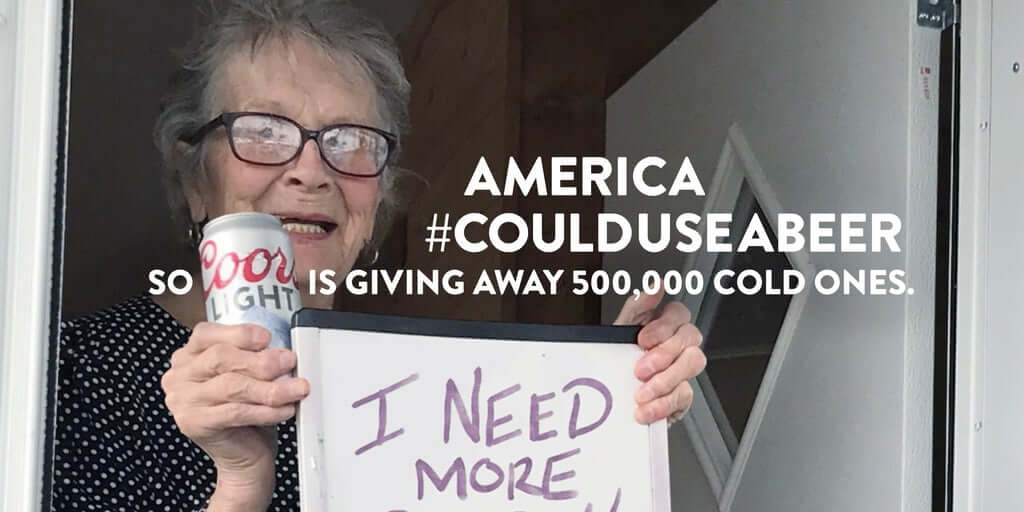
Another campaign that spoke to the general public and got them involved during a difficult time? Coors Light’s #CouldUseABeer. After a photo of a quarantined, 93-year-old woman asking for a beer went viral, Coors Light engaged with its audience by offering free six packs to anyone who was tweeted about (who – you guessed it, could use a beer). This tactic of giving away free items may seem pretty crazy, but it can go a long way. Although Coors Light gave away over 500,000 beers, their name was tweeted about again and again, which led them to trend, and boosted their reputation in a time of need.
American Apparel’s Direct Email Marketing
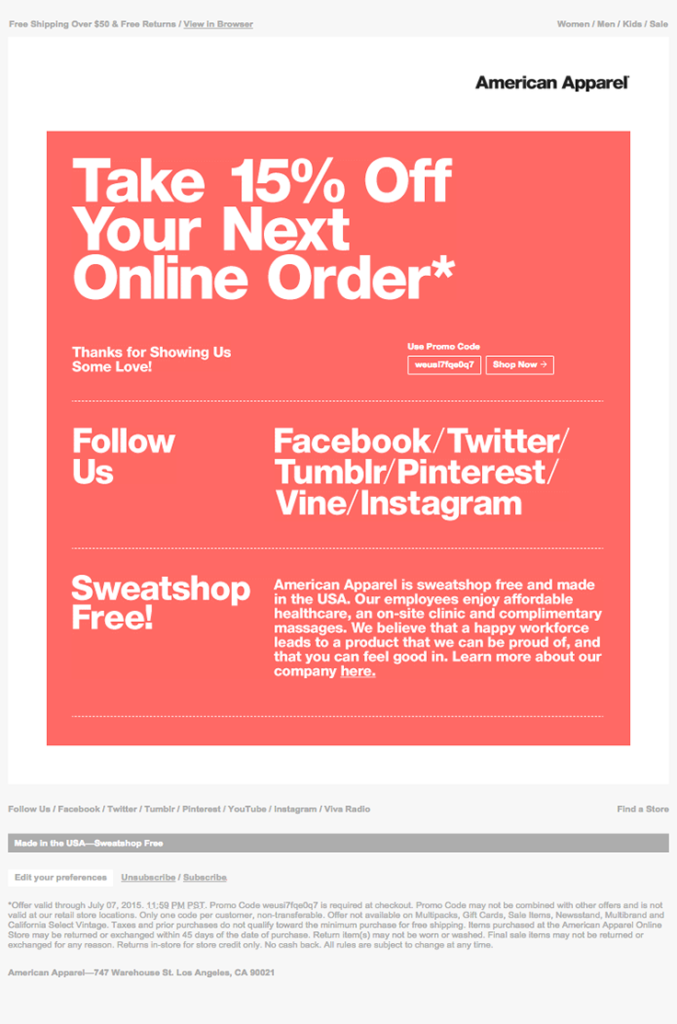
Known for being trendy and modern, American Apparel is no stranger to effective, up-to-date, customer-centric marketing. We’re specifically impressed with their to-the-point email marketing. No frills, no fluff – just what the customer wants (sales, discounts, and freebies). American Apparel always ensures that there’s no guesswork for their customers. Simple and sleek, their emails are call-to-action forward without being in-your-face.
Mercedes’ “Like You” Campaign
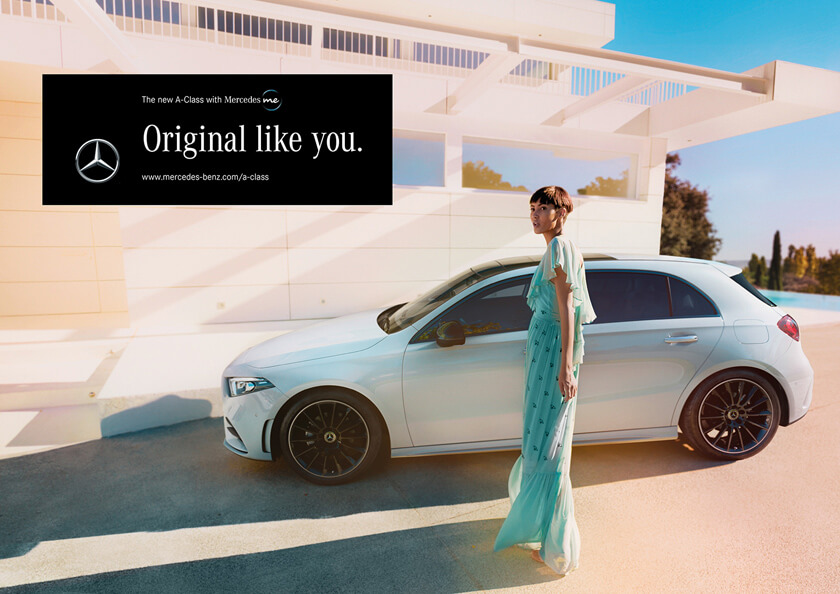
How do you relate a high-end brand to a broader audience of customers? Relate it to them, literally. Mercedes’ “Like You” campaign did just that. Called to several different types of audiences with phrases like, “Detail-obsessed, like you”, “Groundbreaking, like you”, “Original, like you” and “Curious, like you”. And not only was this phrasing compelling, but consistent. For the span of the campaign, potential customers could find the phrasing on billboards, signs, online ads, and on tv. The consistency was key, in that potential customers began to associate themselves with the brand and possibly even buy a Mercedes.
Airbnb’s Use of User Generated Content

Similar to Apple’s tactic, Airbnb uses the photos, videos, and feedback of its customers in its campaigns to promote beautifully classic or uniquely interesting places to stay. “Millennials spend 30% of their media time (5 hours/day) engaged with user-generated content (UGC). Coincidently, this is the same generation that drives Airbnb’s success in the sharing economy.” Airbnb keeps things personal and personalized by including its audience, which facilitates a happy and loyal community of customers.
Coca Cola’s Share a Coke Multichannel Campaign
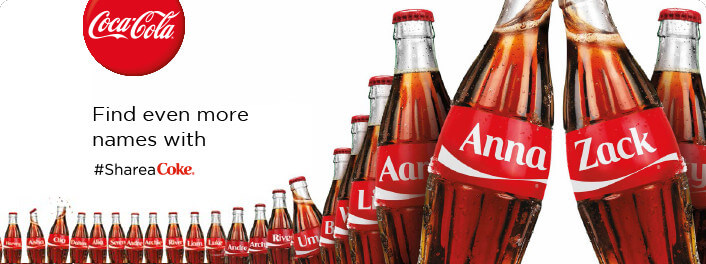
We all know this one. There’s nothing more personal than having your own name on a Coke bottle – which is exactly what Coca Cola did for its ongoing “Share a Coke” campaign. Whether you customize your bottle or simply find your name in store, you’re likely to share it with the world through text, email, on social, you name it (no pun intended)! And its rollout in 2011 sure worked in building brand awareness, boosting sales, and creating positive brand recognition, as “Young adult consumption increased significantly during the campaign, up by 7%, making 2011 the most successful summer ever. The campaign earned a total of 18,300,000-plus media impressions.”
Spotify’s #2020Wrapped Campaign
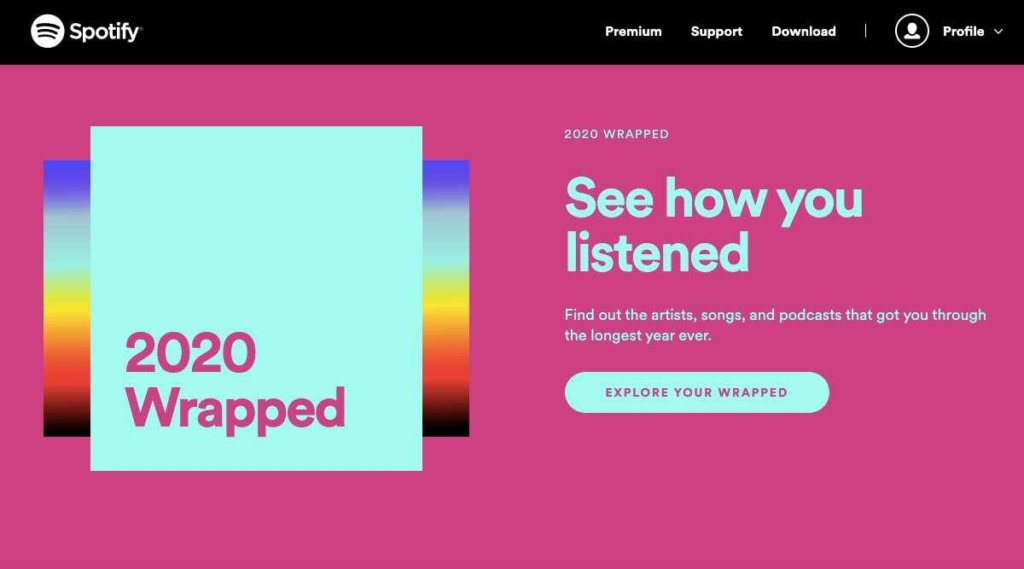
If you have any form of social media, you’ll likely remember this campaign flooding your feed, and maybe you even took part in it. At the end of 2020, Spotify allowed its customers to see their year of music with “2020 Wrapped”, which compiled their listening into a lovely array of photos and stats. Viewers loved seeing their personal data compiled into a nicely packaged marketing piece – and loved sharing their interests with others. Smart on Spotify’s end, because it not only gave them free marketing, but boosted their recognition.
So, What Have We Learned?
If you haven’t noticed, most of these campaigns share one key factor; relatability. How can you use relatability to create effective campaigns, too? Know your audience. Before even starting to brainstorm a campaign, make sure you’re fully aware of who, where, and when you’re targeting. And when you do start your campaign based off your findings, use that data and understanding to carefully craft consistent messaging that includes clear call-to-actions and personalized, catered content. Use hashtags, giveaways, QR codes, PURLs, BRCs, and more to engage with your audience and include them in your campaign. And, when and if appropriate, sprinkle in some humor.
Interested in making an impactful, relatable campaign that can help boost your company’s marketing efforts? Not sure exactly where to start? Look no further. Strata’s here to help. Contact us today to get the brainstorming started.

